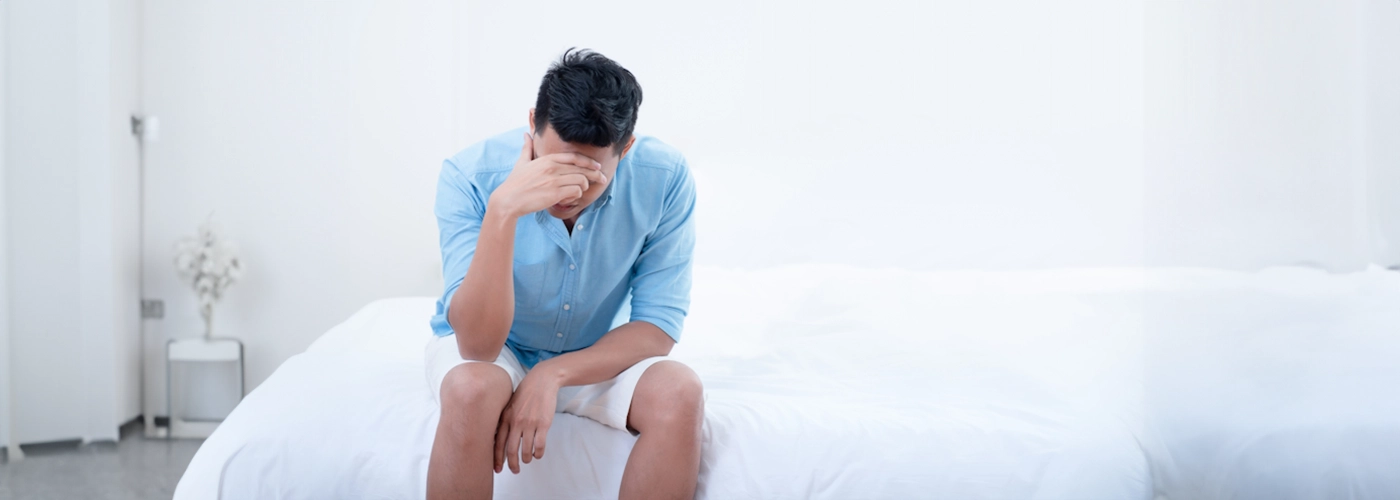
Migraine occurs on one side of a person’s head where they suffer from a severe headache that could last from at least 4 hours to days. This headache can be worsened by slight actions, bright lights, noises, or even coughing and sneezing. Migraines affect approximately 12 to 15% of the world’s population.
Migraine is typically not dangerous to those that are affected but it can affect the person’s quality of life.
Difference Between Cluster Headaches and Migraine
Migraines and cluster headaches are categorised as primary headache disorders. This category is meant for those headaches caused by certain conditions rather than another issue associated with it.
Both migraines and cluster headaches may share similar symptoms. See the table below for the differences between the two:
|
Traits |
Cluster headaches |
Migraines |
|
Occurrence |
1 in 1,000 people |
1 in 7 people |
|
Age group |
Begins in people aged 30s and 40s but also in some cases in other age groups |
Can occur in any age group but may start since adolescence |
|
Gender |
Affects more men than women |
Affects more women than men |
|
Characteristic |
A sudden headache that is usually described as a sharp, piercing, or burning sensation |
Throbbing or pulsating pain at one side of the head |
|
Affected Area |
One side of the head but usually focus around or behind one eye |
One side of the head |
Types of Migraines
- Migraine with aura (classic migraine): 10 to 60 minutes before the headache occurs, the person usually feels some visual disturbance and neurological-related symptoms. This type of migraine typically lasts for an hour. In addition, the migraine will bring along other symptoms such as difficulty speaking, an abnormal sensation, numbness or muscle weakness on one side of the body, tingling sensation in the hands or face, and confusion.
- Migraine without aura (common migraine): A common type of migraine that brings along symptoms such as sudden headache, pain on one side of the head, nausea, confusion, blurred vision, mood swings, fatigue, and heightened sensitivity to light, sound, or even noise.
- Abdominal migraine: Abdominal pain ranging from moderate to severe that lasts for 2 to 72 hours but there is no headache involved. This kind of migraine only affects young children more often than adults.
- Basilar-type migraine: Commonly found among teenage girls and might be associated with their menstrual cycle.
- Hemiplegic migraine: A rare and serious type of migraine that paralyses a person’s one side of the body temporarily. Occur before or during the headache that is brought by migraine.
- Menstrual migraine: Often occurs during a woman’s menstrual cycle.
- Migraine without headache: There is no headache involved but it brings along symptoms such as visual problems, aura symptoms, nausea, vomiting, and constipation.
- Ophthalmoplegic migraine: An uncommon migraine that brings in the usual migraine symptoms and other symptoms such as droopy eyelid, large pupil, and double vision.
- Retinal migraine: Occurs in the person’s one eye where they would experience visual loss or disturbance.
- Status migrainosus: A rare and serious type of migraine that causes the person to have disabling pain and nausea that could last for at least 72 hours.
Stages of Migraine and Their Symptoms
There are four stages of a migraine and symptoms vary with each different stage.
|
Stage |
Symptoms |
|
1. Prodrome: Occurs 24 to 48 hours before the headache happens. |
|
|
2. Aura: This phase will last between 5 to 60 minutes. |
|
|
3. Headache: Migraine headaches usually last from 4 to 72 hours. |
|
|
4. Postdrome: This phase usually lasts for a few hours to about 48 hours. |
|
Causes of Migraines
The reasons for the occurrence of migraine are still unknown but this neurologic disease is hereditary thus it has a higher chance of affecting a person if their family has a history of this disorder.
There are certain prompts that can induce migraine, such as:
- Stress and exhaustion.
- Hormonal changes such as the start of menstrual period.
- Certain medications.
- Changes in sleeping pattern.
- Anxiety and depression.
- Changes in the weather.
- Overexertion in physical limits or lack of physical limits.
- Consumption of addictive substances such as caffeine and tobacco.
- Lack of meals.
- Exposure to bright lights, loud noises, or strong odours.
Diagnosis and Treatment Options for Migraine
You should visit a doctor when your migraines are severe, interfering with your daily lifestyle, occurring several times within a month, getting worse over time, or when medications do not alleviate the symptoms.
Diagnosis
Diagnosis of migraine is pivoted around their medical history, physical exam, and neurological exam results. The tests that will carried out for the diagnosis are blood tests, imaging tests such as computed tomography (CT) or magnetic resonance imaging (MRI), and electroencephalogram (EEG).
Treatment options
Migraines are incurable but there are ways to handle their symptoms.
- Medications: Medications are taken during an attack to alleviate the symptoms immediately. These include aspirin, acetaminophen, nonsteroidal anti-inflammatory drugs (NSAIDs), triptans, ergots, and antiemetics. Medications to prevent migraines are anti-seizure medications, beta-blockers, antidepressants, and calcium channel blockers. As a preventive measure against migraine, the individual is required to take medications regularly, usually on a daily basis, to reduce the occurrence and severity of migraine that hits in the future.
- Lifestyle changes: These include avoidance migraine triggers, consume meals at regular times, reduce caffeine consumption, engage in relaxing activities like yoga, regular exercise, and practise good sleep hygiene.
Make an Appointment at Gleneagles Hospitals
A migraine is distinct from your usual headache. There are treatments available that can be done to help handle migraines and improve your quality of life. Take the initiative and come consult with our neurologist to find treatment options that suit your needs.
The dedicated team of neurologists is available for consultation to provide the best service at Gleneagles Hospitals. Book an appointment with us today if want to inquire about migraines and other neurological conditions.
Please contact the Health Screening Centre at the Gleneagles Hospital nearest to you for health screening appointments.







